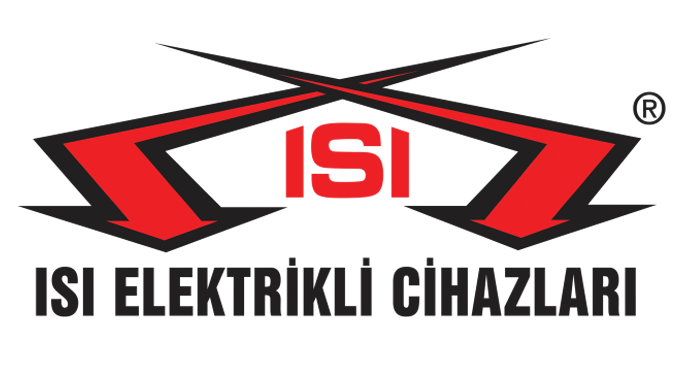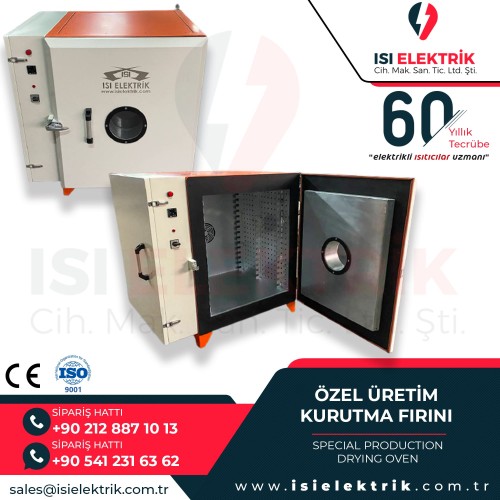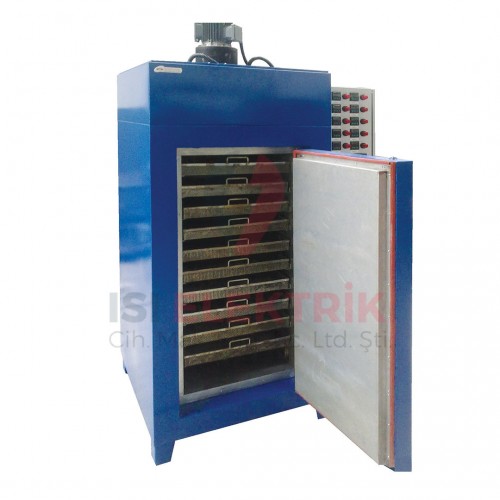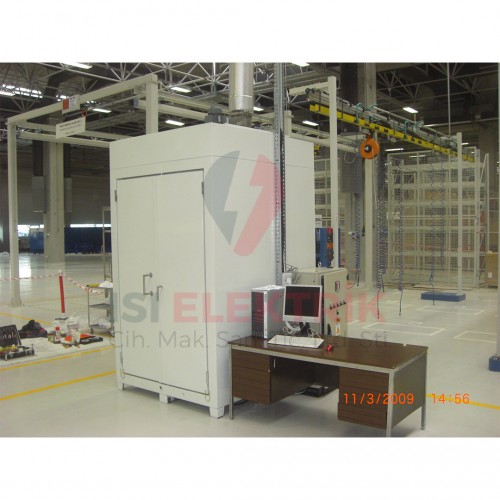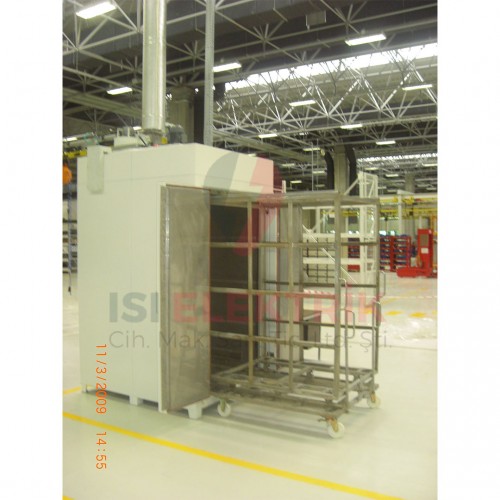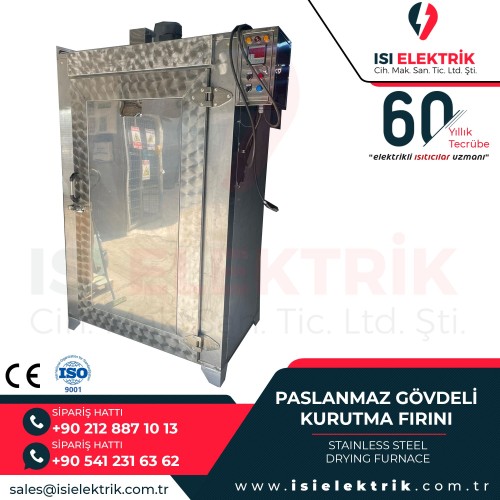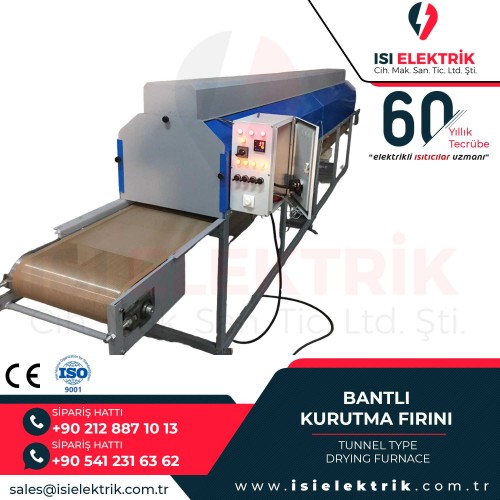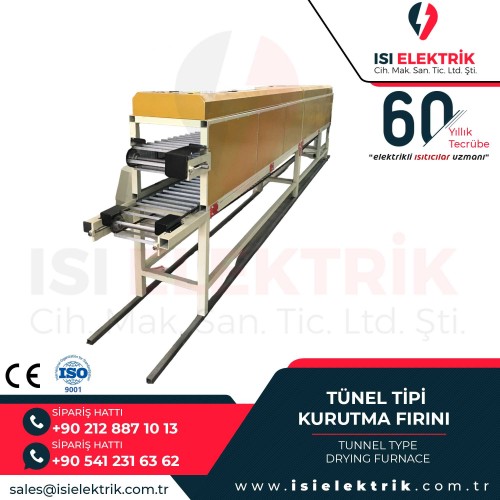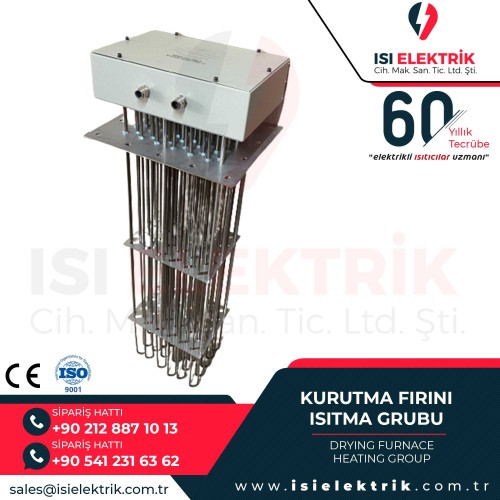Drying Ovens
Drying ovens are products used in the drying processes of materials. With this application, many functions such as heating, drying, and processing are performed. Industrial drying ovens operate with electric and gas systems. These ovens, which can be used in different industrial fields, can operate at different temperatures ranging from 100 to 600 degrees. These ovens have a special programming feature. Thanks to this feature, the oven automatically stops when it reaches a certain temperature.
Drying Oven
A drying oven is a device used to dry materials. It is commonly used in laboratories, industrial settings, and homes. Drying ovens work by removing moisture from the material. They achieve this by using heat, ventilation, or a combination of both.
Drying Oven Prices
For detailed information about drying oven prices, feel free to contact us immediately. Prices vary depending on the type, technical specifications, materials used, and model of the oven. Our company provides high-quality and durable drying ovens at the most competitive prices, tailored to meet your specific needs.
Drying ovens are used in various fields depending on their purpose. From large-scale industrial drying ovens to compact laboratory models, our diverse range of products caters to different requirements. Factors such as oven capacity, temperature range, energy consumption, and material quality play a significant role in determining the pricing.
Our company designs customized ovens for all industrial and commercial drying needs. By utilizing advanced technologies in the production process, we manufacture energy-efficient and long-lasting drying ovens. Our ovens offer maximum performance while minimizing energy consumption, providing an eco-friendly solution.
The advanced technology used in our drying ovens accelerates your production process and makes the drying process more efficient. These ovens are widely used in industries such as textiles, food, metals, wood, and chemicals. With specialized models designed for different sectors, we help optimize your workflows and achieve better results.
Additionally, we provide comprehensive after-sales services to support you throughout the lifecycle of our drying ovens. From installation and maintenance to technical support, we ensure your long-term satisfaction. We prepare custom price offers tailored to your needs and budget.
Contact us today to get detailed information about drying oven models and prices that suit your needs. Our professional team will respond to you promptly and provide the best solutions. We are here to be your reliable partner in finding high-quality, efficient, and affordable drying ovens.
Drying Oven
Heating Elements Used in Drying Ovens
Heaters Used in Drying Ovens
- Ceramic Heaters: They have high temperature resistance and are commonly used in industrial drying ovens. Ceramic heaters consist of wire coils placed between ceramic elements and provide homogeneous heat distribution.
- Mica Heaters: Mica is an insulation material with high temperature resistance. Mica heaters consist of wire coils placed between mica sheets and are generally used in medium temperature ranges.
- Quartz Heaters: Quartz heaters have high temperature resistance and chemical resistance. Due to these properties, they are preferred in industrial drying ovens and laboratory applications.
- Metal Sheet Heaters: Metal sheet heaters consist of resistive heating elements placed between metal sheets. These types of heaters can be preferred in drying ovens that are low-cost and generally operate at lower temperature ranges.
Technical Specifications of Drying Oven Heaters
- Capacity: Between 100 Watts and 5000 Watts
- Voltage: From 12 Volts to 480 Volts
- Temperature Range: Between 100°C and 800°C
- Cross-Sectional Shape: Rectangular or cylindrical
- Material Selection: Nickel-chromium, stainless steel, Inconel, or similar durable materials
- Connection Type: Screw, nut, or alternative connections
- Thermocouple Selection: J, K, T, E, or other standards
- Heating Element Type: Wire wound, mica strapped, or ceramic insulated
- Cooling Method: Air or water-cooled
- Protection Class: IP65 or higher protection classes
- Mounting Type: Flanged, bolted, or other mounting options
Considerations in Heater Selection
- Oven Type and Size: The type and size of the oven will determine the power and size of the required heater.
- Maximum Temperature: The maximum temperature the oven needs to reach will determine the heater material and type.
- Safety: The heater must be appropriately designed to ensure the safety of the materials in the oven and the users.
Other Technical Specifications
- Body Material: Stainless steel, titanium, PVC, or similar materials
- Filling Material: Epoxy resin, silicone, or other suitable materials
- Cable Type: Silicone cable, Teflon cable, or other suitable options
- Terminals: Copper, brass, or other suitable terminals
Advantages of Drying Oven Heaters
- Fast Heating Time: Heaters typically heat up quickly, reducing the startup time of drying ovens and contributing to increased productivity.
- High Efficiency: Modern heater designs can achieve high levels of efficiency. By directly transferring heat to the material, they minimize losses and use energy efficiently.
- Cost-Effectiveness: Heaters are generally cost-effective and readily available. This provides a cost-effective solution for the construction and maintenance of drying ovens.
- Controlled Heating: Heaters, when used with temperature control systems, help provide precise temperature profiles. This reduces the risk of unwanted burning or degradation of materials during drying.
- Environmentally Friendly Options: Some modern heaters can be made from environmentally friendly materials. This can reduce the environmental impact of drying processes and contribute to a sustainable production process.
Areas of Use for Drying Oven Heaters
- Wood Industry: Used in the drying and processing of wood materials. Drying ovens play a significant role in furniture manufacturing, wooden flooring, and other wood product production.
- Paper Industry: Used for drying paper pulps and the production of paper products. Drying sheets and rolls of paper is an important step in paper factories.
- Rubber Industry: Used for drying and shaping rubber materials. During rubber production, drying of raw rubber and rubber components is necessary.
- Packaging Industry: Used in the production and processing of packaging materials. Drying ovens are used for drying and shaping plastic film, stretch film, and other packaging materials.
- Paint and Coating Industry: Used for drying after painting and coating metal parts and products. In automotive, metalworking, and other industries, paint drying ovens are widely used.
- Glass and Optics Industry: Drying processes are important in the production of optical glass products and glass lenses. Drying ovens are used for shaping and processing optical glass parts and lenses.
Features of Drying Ovens Ensuring High Thermal Efficiency
Drying ovens are specially designed devices aimed at achieving energy efficiency and effective heat transfer. Thermal efficiency plays a critical role in reducing costs and minimizing environmental impact during drying processes. Here are the key features of drying ovens that ensure high thermal efficiency:
- Advanced Insulation: High-quality insulation materials used in the structure of drying ovens minimize heat loss. Insulation helps maintain internal temperature, reducing energy consumption.
- Precise Temperature Control: Modern drying ovens are equipped with thermostats and temperature sensors that ensure precise maintenance of the target temperature. This feature prevents unnecessary energy consumption and provides consistent heat distribution throughout the process.
- Even Heat Distribution: The airflow inside the oven is designed to be evenly distributed. This ensures that all materials are dried uniformly, enhancing energy efficiency.
- Energy Recovery Systems: Advanced drying ovens feature energy recovery systems that reuse waste heat generated during the process. These systems reduce overall energy consumption, offering an environmentally friendly solution.
- High-Performance Heating Elements: The heating elements in these ovens are designed for rapid and efficient heat production. These high-temperature-resistant components minimize energy loss even during prolonged use.
- Fast Heating and Cooling: The quick heating capability of drying ovens shortens process times, leading to energy savings. Similarly, rapid cooling features enable more efficient operations.
- Programmable Controls: Modern drying ovens are equipped with programmable control panels. These panels optimize process time and temperature levels, preventing unnecessary energy usage.
- Durable and Long-Lasting Design: Built with high-quality materials, drying ovens offer long-lasting performance. This reduces the need for frequent maintenance or part replacement, maintaining energy efficiency over time.
Drying ovens combine energy savings with high performance, making them a preferred solution in industrial and laboratory environments. Properly designed and technologically equipped drying ovens help reduce costs while offering an environmentally conscious operation.
Energy Saving with Drying Ovens
Drying ovens are modern devices designed to remove moisture from materials while ensuring energy efficiency. Reducing energy costs and minimizing environmental impacts require the proper use and efficient design of these ovens. Below are the ways to achieve energy savings with drying ovens:
- High-Quality Insulation: Advanced insulation materials used in drying ovens minimize heat loss, directing energy solely to the material being processed. This reduces energy consumption and optimizes process times.
- Programmable Control Systems: Modern drying ovens are equipped with control panels that allow precise adjustment of the required temperature and duration during the process. This prevents unnecessary energy use and enhances efficiency.
- Energy Recovery Systems: Some drying ovens feature energy recovery systems that reuse the waste heat generated during operation. This significantly reduces overall energy consumption.
- Precise Airflow Control: Drying ovens are designed to optimize airflow. Proper air circulation ensures uniform heat distribution within the oven and prevents unnecessary energy wastage.
- Proper Size and Capacity Selection: Choosing a drying oven that matches the specific needs is crucial for energy savings. An oversized oven may lead to unnecessary energy consumption, while an undersized one can slow down processes and increase energy usage.
- Maintenance and Cleaning: Regular maintenance and cleaning of drying ovens prevent performance degradation and reduce energy consumption. Dirty or worn-out components can cause the device to consume more energy.
- Fast Heating and Cooling Features: Next-generation drying ovens offer fast heating and cooling features, saving energy. Rapid heating allows processes to be completed more quickly, reducing energy usage.
- Automation Technologies: Automation systems optimize the energy usage of the oven, ensuring that energy is consumed only when necessary. This reduces energy costs by preventing human errors.
Achieving energy savings with drying ovens is possible through the right device selection, efficient use, and regular maintenance. Technologically advanced and energy-efficient drying ovens not only reduce operational costs but also promote a sustainable production process.
Technical Details to Consider When Choosing a Drying Oven
Choosing the right drying oven is essential for achieving an efficient drying process and ensuring long-term use. Here are the key technical details to consider when selecting a drying oven:
- Processing Capacity: The drying oven you choose should match the quantity and size of the materials to be processed. An oversized oven can lead to energy waste, while an undersized one may not deliver the desired performance.
- Temperature Range: The oven's maximum temperature and temperature control precision should align with your processing requirements. A high-precision temperature control system plays a critical role in achieving desired results.
- Heat Distribution: Uniform heat distribution in the drying oven ensures that materials are dried evenly. Poor heat distribution can lead to uneven drying and lower product quality.
- Energy Efficiency: An energy-efficient drying oven reduces operating costs. Insulation systems and energy recovery features are key factors that enhance the oven's efficiency.
- Material Type and Construction: The materials used to manufacture the oven impact its durability and longevity. High-quality materials like stainless steel offer safety and long-lasting performance.
- Ventilation System: An effective airflow system ensures rapid moisture removal and efficient drying. Inadequate ventilation can prolong the drying process.
- Control and Automation: Digital control panels and automation systems provide a user-friendly experience. These systems make it easy to set and monitor parameters such as temperature and duration with precision.
- Oven Dimensions: The drying oven should fit the layout and space available in your facility. An oversized oven can create space management challenges.
- Ease of Maintenance: Easy cleaning and maintenance are crucial for preserving the oven's performance. Ovens that are difficult to maintain may lose efficiency over time.
- Manufacturer and Technical Support: Purchasing a drying oven from a reliable manufacturer ensures fewer issues in the long term. Additionally, technical support services help resolve any problems quickly.
By paying attention to these technical details, you can select the drying oven that best suits your needs. A proper choice will ensure long-lasting and efficient operation.
Frequently Asked Questions
Drying Oven
